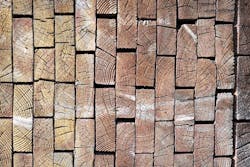Oregon is first state to change building code to allow tall mass timber buildings
Oregon recently became the first state to approve the use of science-based building code requirements for tall mass timber buildings.
Under Oregon’s statewide alternate method (SAM), developers can receive early technical consideration and approval on tall mass timber structures. The Administrator of the State Building Codes Division issued SAM No. 18-01, which provides a prescriptive path for utilization of the code requirements developed by the International Code Council (ICC) Tall Wood Building Ad Hoc Committee over the past two years.
The requirements also received a favorable recommendation during the April 2018 ICC Code Action Hearings—the first step of the process to include them in the 2021 International Codes.
“Mass timber is a new category of wood products that will revolutionize how America builds, and we’ve seen interest in it continue to grow over the last several years,” said American Wood Council President & CEO Robert Glowinski in a news release. “This action by the Codes Division Administrator helps code officials in Oregon by making provisions consistent throughout the state.”
